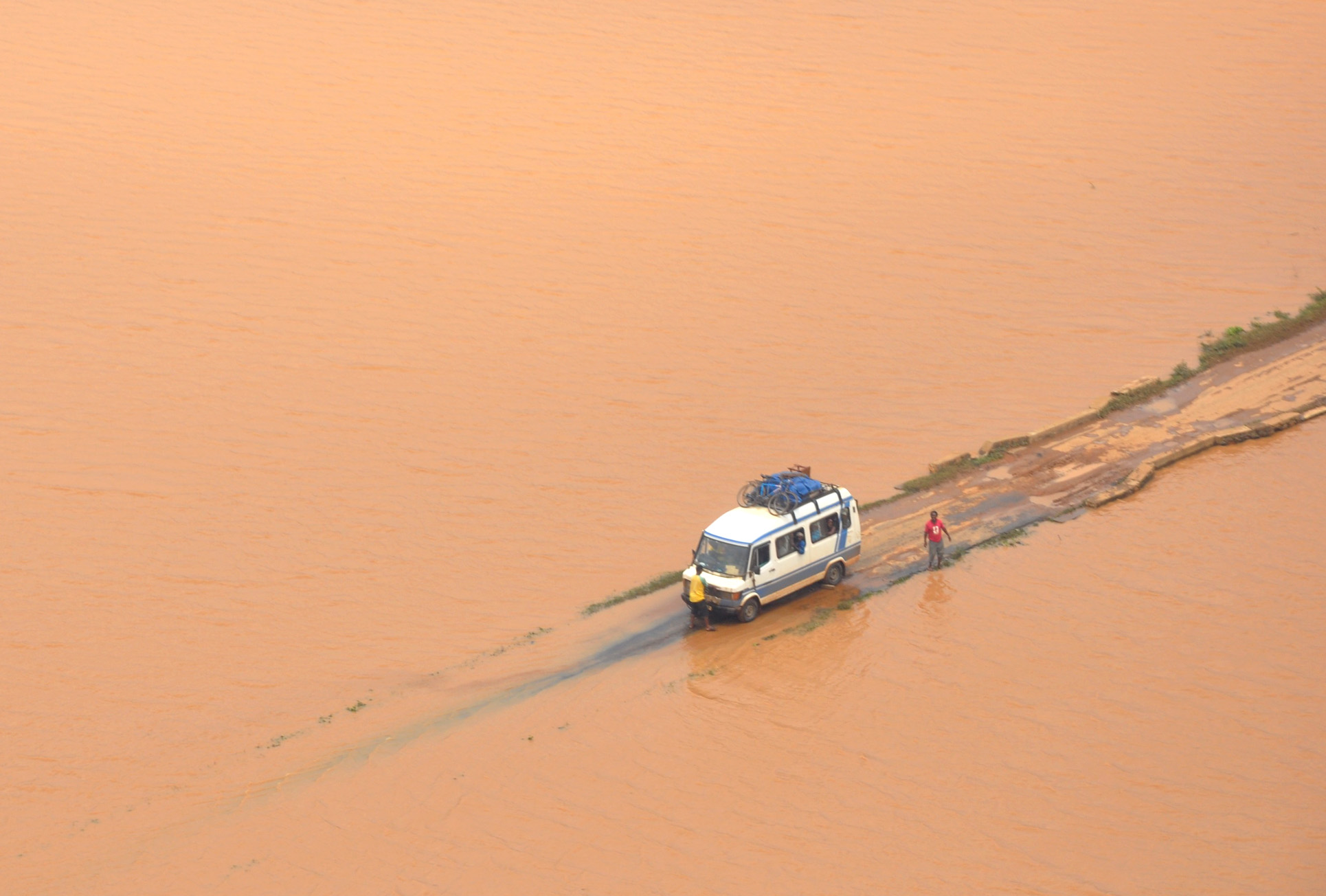Cyclone Bingiza ripped into the northeast of the island on 14 February, killing at least six people as high winds shredded the flimsy homes of subsistence farming and fishing communities.
"This is the worst time of year for a cyclone, as even if it comes in January they can restart cultivating with shorter cycle rice varieties, but if it comes in February they can't restart in time for the April harvest," Didier Young, emergency coordinator at CARE International, told IRIN.
The cyclone season runs from October to April, and although Bingiza confirmed February as the peak period for these weather events, its legacy will be felt for months to come in one of the world's poorest nations.
"If water stays on the rice for a week it will be ruined," Young said. About 80 percent of Madagascar's population of 20 million cultivate rice.
Bingiza made landfall at dawn in the Sava region, also damaging fields of vanilla, a cash crop, and the livelihoods of fishing communities in the Masaola peninsula.
"The area hit is a fish producer for the whole Sava region, supplying lobsters and calamars [squid] to tourist areas in the south, and fish up the northeast coast. If the roads are cut off they will have to dry the fish, which is a lot less profitable to sell than fresh fish," said Dasy Ibrahim, the CARE International project leader based in the Antalaha office.
The cyclone crossed the island and went into the Mozambique Channel, then turned back and visited Madagascar's southern reaches, which experienced flooding in the weeks preceding the cyclone.
"All the rice fields are flooded and all the harvests are lost," Young said. "Damage is much worse to the south than the north, and now Bingiza is coming back this way, which means it will get much worse."
The National Office for Disaster Preparedness (BNGRC) reported that as far as was known at present, Bingiza had killed six people and about 7,500 were left without adequate shelter.
More than half the houses and several public buildings in the fishing village were ruined, leaving around 3,000 people without proper shelter.
Floodwater and fallen trees destroyed access roads and the bridge, cutting off the fishing village from vital selling markets and food. Zafy said the only means of reaching the village was by boat, and the area also needed medicine as many people got sick after cyclones.
"Even before the cyclone, rice [the staple food] had reached about 2,000 ariary (US$1) a kilo in this area, and now that supplies can't get through it will be even worse," Ibrahim said.
The World Food Programme had prepositioned stocks of rice and canned vegetables, as cyclones were predictable natural disasters in Madagascar’s northern coastal towns.
Rebuilding
The city of Mananara, through which the cyclone passed, received some structural damage to buildings, but the situation appeared to be much worse in the surrounding countryside.
"I've come from the bush by motorbike and there are many houses destroyed, many people without shelter, and who are stranded," said Dominique Chan, mayor of Mananara.
"People here live from cash crops, like vanilla, cloves, coffee and pepper, but us people in Mananara spend what we have, so when things like a cyclone happens, farmers don't have the money to buy food stocks immediately."
Chan doubted there would be a vanilla harvest this year, after the destruction brought by Bingiza’s winds, and the economy of the whole area would be affected.
Yves-Pascal Suter, country director of Medair, a relief agency, told IRIN: "The damage is much less serious than we expected for a cyclone of this strength, but in the months that follow there could be a negative impact on nutrition, as there has been damage to crops such as cloves and rice."
The rebuilding of houses with easily accessible materials from surrounding forest has begun, but the "most vulnerable, like the disabled, single females and the elderly, do not have the strength or help to go to the forest and chop wood or gather materials needed to rebuild," Young said.
"We have found [in the past] some of these people, months later, living on the ground under just the collapsed roof."
nm/go/he
This article was produced by IRIN News while it was part of the United Nations Office for the Coordination of Humanitarian Affairs. Please send queries on copyright or liability to the UN. For more information: https://shop.un.org/rights-permissions





